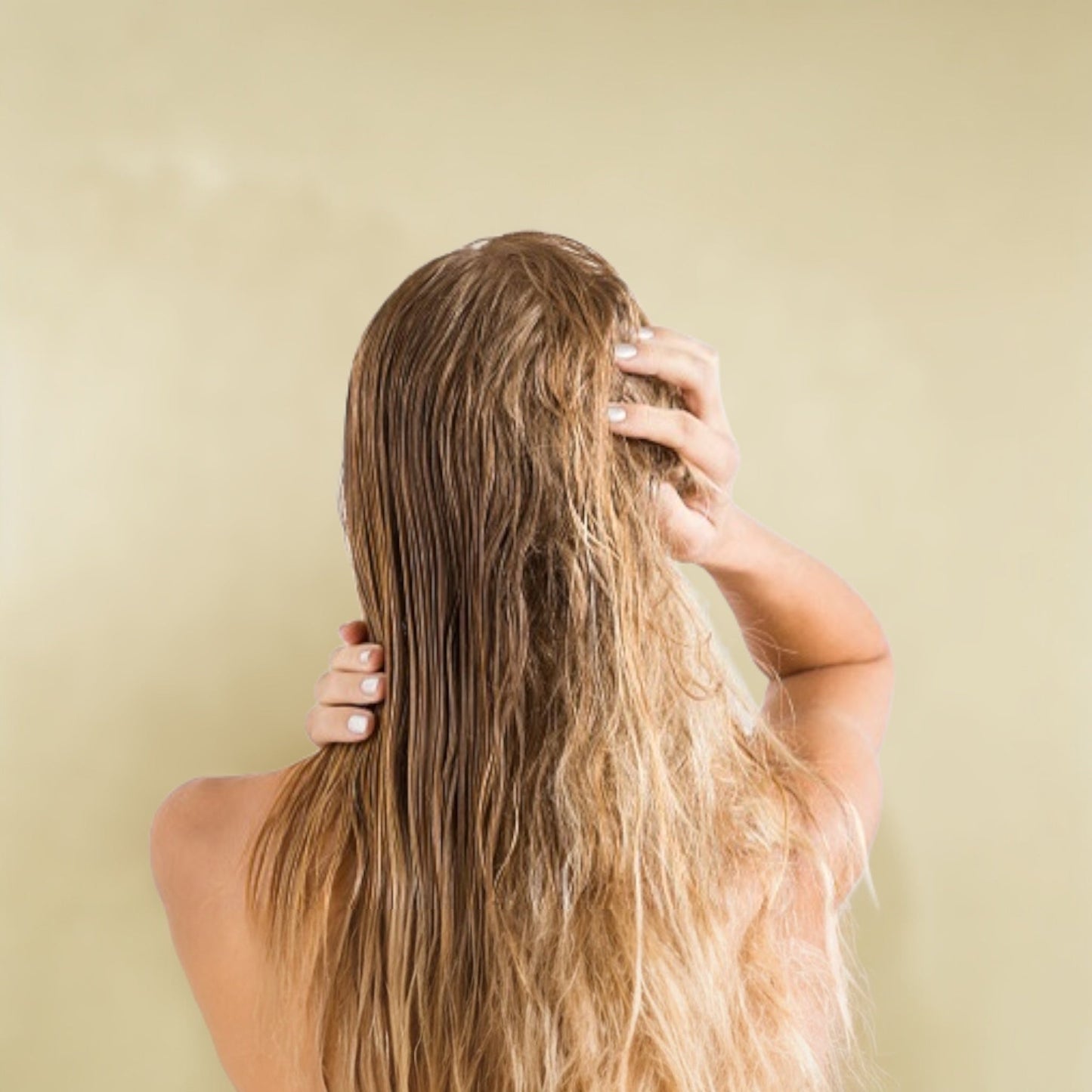
Bleaching is one of the most transformative—and often misunderstood—processes in haircare. Most people know it strips moisture, but fewer realise it can also break down the protein structure that gives hair its strength. This article explores what bleaching really does to your hair, how to spot the signs of protein depletion, and how to restore balance with the right products and routine.
What Happens to Hair When It’s Bleached?
Bleaching works by opening the hair cuticle and using an oxidising agent (usually hydrogen peroxide) to dissolve melanin pigments inside the cortex. But in the process, bleach doesn’t just affect colour—it also weakens the protein bonds that support the hair’s structure.
Hair is primarily made of keratin, a tough protein held together by disulfide bonds. Bleach disrupts these bonds, leaving the hair more porous and fragile. The result is a dual issue:
-
Moisture loss due to cuticle damage
-
Protein breakdown, leading to structural weakness
Is It Safe to Bleach Your Hair? Yes—With the Right Approach
Bleaching doesn’t have to mean damaging your hair. In skilled hands, and with the correct aftercare, it can be done safely—even repeatedly.
What makes the difference is:
-
Working with a trained professional who understands the process
-
Spacing out bleaching sessions to avoid overprocessing
-
Following a home routine that rebuilds, rehydrates, and protects the hair
Listening to a good hairdresser is key—they can assess your hair’s condition, recommend realistic outcomes, and guide you through long-term colour goals safely. And once you’ve lightened your hair, the right daily routine will help you keep it strong and healthy.
Signs Your Hair Has Lost Protein
Hair that’s lost protein often:
-
Feels stretchy or mushy when wet
-
Snaps easily when brushing or styling
-
Lacks strength, elasticity, or bounce
-
Appears dull, frizzy, or overly soft without resilience
This is common with bleached hair, especially when protein loss hasn’t been addressed alongside moisture.
Moisture vs Protein: What Bleached Hair Really Needs
Hair thrives when moisture and protein are balanced. If you focus only on hydration, hair may feel soft but still break. Too much protein, on the other hand, can make hair brittle.
The solution? A product routine that delivers both.
The Laura Simmons Sandalwood Conditioner combines lightweight proteins like hydrolysed silk and wheat proteinto support structure, while evening primrose and argan oil replenish softness and shine. Paired with the Sandalwood Shampoo, which uses aloe vera and coconut-derived cleansers, you can cleanse gently while respecting hair that’s already been sensitised.
Caring for Bleached Hair at Home
Taking care of bleached hair starts with the right daily routine. Here’s how to protect and strengthen your hair after lightening:
-
Use a gentle, hydrating shampoo
Bleached hair can become dry and delicate, so harsh shampoos can make it worse. The Laura Simmons Sandalwood Shampoo uses naturally derived cleansers like Cocamidopropyl Betaine and Aloe Vera Juice to clean gently without stripping. It soothes the scalp and helps maintain moisture in the hair. -
Nourish and strengthen with every condition
After bleaching, your hair needs both moisture and support for the internal structure. The Sandalwood Conditioner provides this dual benefit. It contains Hydrolysed Silk and Wheat Protein, which support strength and elasticity, along with rich natural oils like Argan and Evening Primrose to restore softness and shine. -
Always protect before styling
Heat styling can worsen damage after bleaching. The Laura Simmons Lightweight Thermal Defence Serum creates a protective barrier, helping to shield hair from heat, UV, and pollution while smoothing the cuticle and reducing dryness. It’s suitable for both wet and dry hair. -
Brush gently, with the right tools
Your choice of brush matters. The Laura Simmons Natural Beechwood Brush uses a blend of nylon and ethically sourced boar bristles, which help distribute natural oils from root to tip. This helps condition the hair naturally while reducing tension on fragile strands, making it an excellent choice for hair that’s been lightened or weakened. -
Don’t re-bleach too soon
Wait at least 6–8 weeks between bleaching sessions, and always consult your hairdresser. Overlapping lightener on already-processed hair is one of the main causes of breakage. -
Treat your hair gently
Use a wide-tooth comb or soft bristle brush, avoid tight styles that cause tension, and sleep with your hair loosely tied or on a silk pillowcase to reduce friction.
The Bottom Line
Bleaching doesn’t have to mean breakage. With the right guidance and care, it can be a safe and beautiful way to express your style. The key is not overdoing it, spacing out sessions, and using the right home care products to support your hair between appointments.
The Laura Simmons collection has been formulated with the needs of bleached and sensitised hair in mind—nourishing, strengthening, and protecting your strands while offering a touch of indulgent luxury.
Let your colour shine—without compromising your hair’s health.
